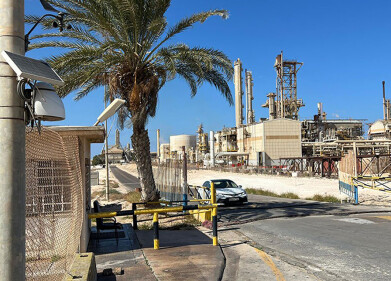Air Quality Monitoring
Could 15-Minute Cities Reduce Urban Air Pollution?
Feb 22 2023
It may seem strange to some that the niceties of urban planning programmes have become a hot-button political issue, much less the reason for sizeable protests. But recently, protests have sprung up in the United Kingdom and Canada against proposals to turn places like Oxford, London and Edmonton into what’s called ‘15-minute cities.' The concept is simple: create neighbourhoods where all the basic services and amenities that people need for daily life are within a 15-minute walk or bike ride from their homes. The idea is not new, but it has gained renewed interest as cities look for ways to reduce carbon emissions and improve air quality. By creating neighbourhoods where people can meet their daily needs without relying on cars, we can reduce traffic congestion and air pollution.
Air pollution is a major health concern in many urban areas. According to the World Health Organization, outdoor air pollution (in particular, particulates) is responsible for an estimated 4.2 million premature deaths each year. The sources of air pollution are many and varied, including industrial activities, transportation, and household energy use. One way to tackle this problem is to reduce the amount of driving that people do, and the 15-minute neighbourhood concept can help with this.
By creating neighbourhoods where people can walk or bike to get to work, school, shops, and other services, we can reduce the need for cars. This not only helps to reduce air pollution, but also reduces traffic congestion and the time and cost associated with commuting. A 15-minute neighbourhood can also help to promote physical activity, which is an important factor in maintaining good health. When people can easily walk or bike to get around their neighbourhood, they are more likely to engage in physical activity as part of their daily routine.
Implementing a 15-minute neighbourhood can also have economic benefits. By encouraging local businesses to set up shop in these neighbourhoods, we can create vibrant and diverse communities. This can attract more people to live in the area, which can help to support local businesses and create jobs. This can also reduce the cost of living, as people do not need to spend as much money on transportation.
However, there are challenges to implementing the 15-minute neighbourhood concept. One of the biggest challenges is the need to provide a variety of services and amenities within a small area. This can be difficult in areas that are already built up and may have limited space for new development. It may also be challenging to provide services that are not in high demand in a particular area, such as medical services or specialized retail stores. There may also be issues with providing affordable housing in these neighbourhoods, as the demand for housing in these areas may be high, driving up prices.
Another challenge is the need to change the way people think about transportation. Many people are used to relying on cars to get around and may be resistant to the idea of walking or biking to get to their daily destinations. This can be especially challenging in areas with harsh weather conditions, such as extreme heat or cold, or areas with hilly terrain. To overcome these challenges, it will be necessary to invest in infrastructure to support walking and biking, such as bike lanes, sidewalks, and pedestrian crossings.
Despite these challenges, there are many examples of cities that have successfully implemented the 15-minute neighbourhood concept. One example is the city of Paris, which has implemented a plan to create 100% bicycle-friendly streets by 2024. Another example is the city of Portland, Oregon, which has implemented a plan to create a network of "neighbourhood greenways" that prioritize walking and biking over cars. These efforts have already led to improvements in air quality, reduced traffic congestion, and increased physical activity among residents.
So, the 15-minute neighbourhood concept has the potential to be a powerful tool in the fight against air pollution. By creating neighbourhoods where people can walk or bike to meet their daily needs, we can reduce the amount of driving that people do, which can help to reduce traffic congestion and air pollution. However, implementing this concept will require a significant shift in the way we think about transportation and urban planning. It will require investment in infrastructure, changes to zoning laws and building codes, and the involvement of the community to ensure that the neighbourhood is designed to meet their needs.
Digital Edition
AET 28.4 Oct/Nov 2024
November 2024
Gas Detection - Go from lagging to leading: why investment in gas detection makes sense Air Monitoring - Swirl and vortex meters will aid green hydrogen production - Beyond the Stack: Emi...
View all digital editions
Events
Jan 12 2025 Abu Dhabi, UAE
Jan 14 2025 Abu Dhabi, UAE
Jan 20 2025 San Diego, CA, USA
Carrefour des Gestions Locales de L'eau
Jan 22 2025 Rennes, France
Safety, Health & Wellbeing LIVE
Jan 22 2025 Manchester, UK



















